Look at the Tiny Tourists and Bite Size Burglars of Japan’s Mini World
Tobu World Square has 102 little landmarks and 140,000 mini people.
A photo of the “America Zone” at Tobu World Square. (All Photos: Thomas Beecher)
In a country where highly detailed, unapologetically kitsch attractions reign supreme, Tobu World Square takes the cake.
Nestled among the idyllic mountain surroundings of Nikko, around two hours north of Tokyo, Tobu World Square is an architectural park with 102 1:25 scale replicas of famous landmarks from around the world. The replicas, which took five years to complete, were built by the people of Toho Eizo Bijutsu, a Japanese film production company renowned for designing the sets of the early Godzilla films.
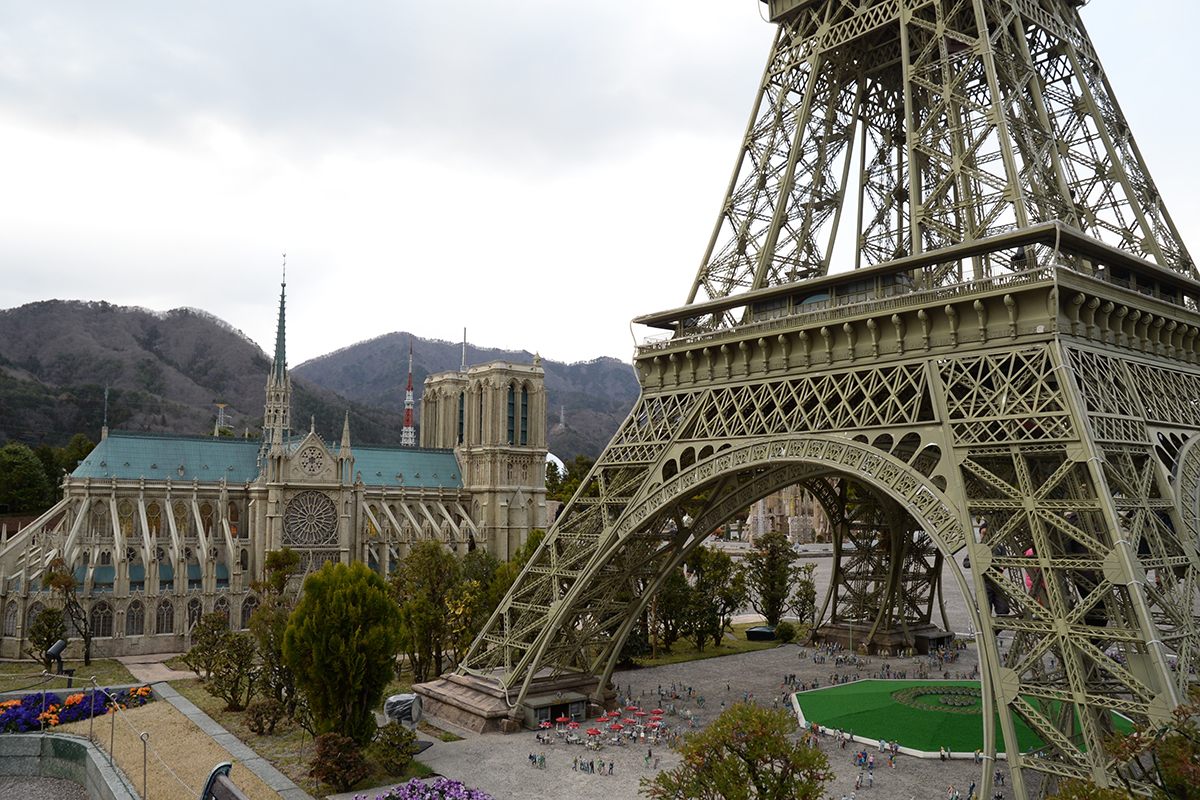
The Europe Zone, where the Eiffel Tour meets Notre Dame.
Scattered around the landmarks are 140,000 people, each about three inches tall, each involved in some sort of intriguing scene.

Re-enacting Fame, in miniature.
Created by the Tobu Railway Company, Tobu World Square opened in 1993 at a cost of 14 billion yen (US$124.4 million, in 2016 dollars). The idea behind the park, says a spokesperson, was to ”protect and preserve world heritage sites and buildings from across the world.” Within its first four months of opening, the theme park had received one million visitors, making it one of Japan’s most popular tourist attractions.

A visit to the America Zone.
It was probably no coincidence that in the early 1990s Japan was experiencing an unprecedented boom in outbound travel. According to the Japanese Tourism Marketing Co., the number of Japanese departures exceeded 10 million for the first time in 1990. In service of their newfound fascination, it stands to reason that there would be a demand for an attraction like the Tobu World Square, which bundles all of the world’s treasures into one area.

Pomp and ceremony at Buckingham Palace.
The 87,000m² space—about the size of 16 football fields—is divided across five geographic regions and includes replicas from 21 countries, 45 of which are UNESCO World Heritage listed sites. The tour begins, as you might expect, with the Modern Japan Zone: an incredibly well presented tribute to some of the country’s greatest architectural achievements. An announcement blares at Tokyo Station as a little model train arrives at its tiny platform, before zipping out of sight.
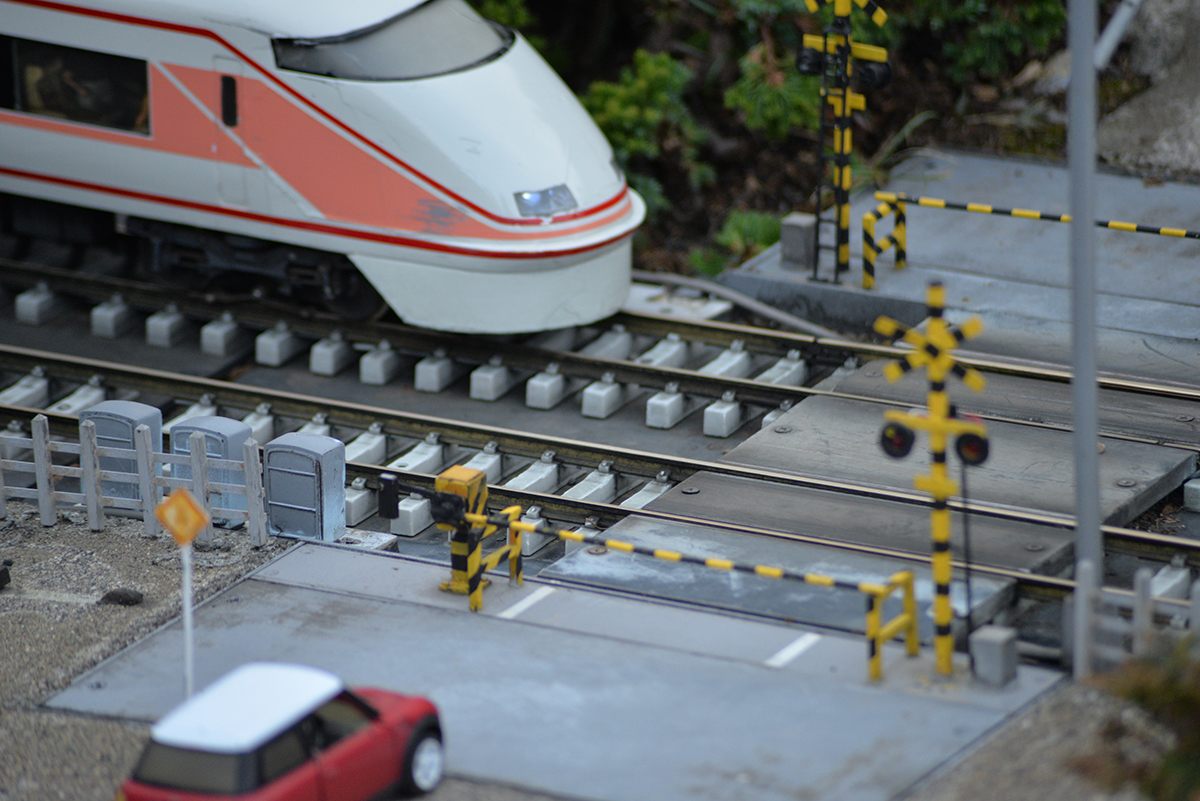
Make way for the model train.
Tokyo Tower and the more recently constructed Tokyo Skytree fill the landscape, poking several feet into the sky. At Narita International Airport, two-foot 747s move around the tarmac as they taxi into the terminals.

But while the replicas are certainly the centerpieces, the real attractions are the 140,000 miniature figurines—each about three inches tall—that recreate quotidian scenes around each landmark. You can spend hours just inspecting their situations.
Over at mini Narita Airport, for example, a cohort of airline staff strolls coolly into the terminal while a group of dapper school children files neatly into a bus.

An elderly dignitary is encircled by a media gaggle as his security guard escorts him out.

Paparazzi.
Each figurine has its own little story, which is left general enough for you to create your own interpretation. (Will the woman racing into the terminal get on her flight and make it to that big interview?)

Rushing for a flight at Narita Airport.
As you stroll from Modern Japan to America Zone—across the East River Bridge, no less—the first sign that you’ve entered the US is when a Coca Cola truck zips by the scene of a man being pulled over by the NYPD. He doesn’t look happy.

From there, chaos ensues. The order and festivity of the Modern Japan Zone is replaced by an impressive Manhattan scene replete with everything from a traffic pileup to a policeman in pursuit of a gang of gun-toting bank robbers (with giant money sacks slung over their shoulders). Accurate or not, it’s both impressive and hilarious.
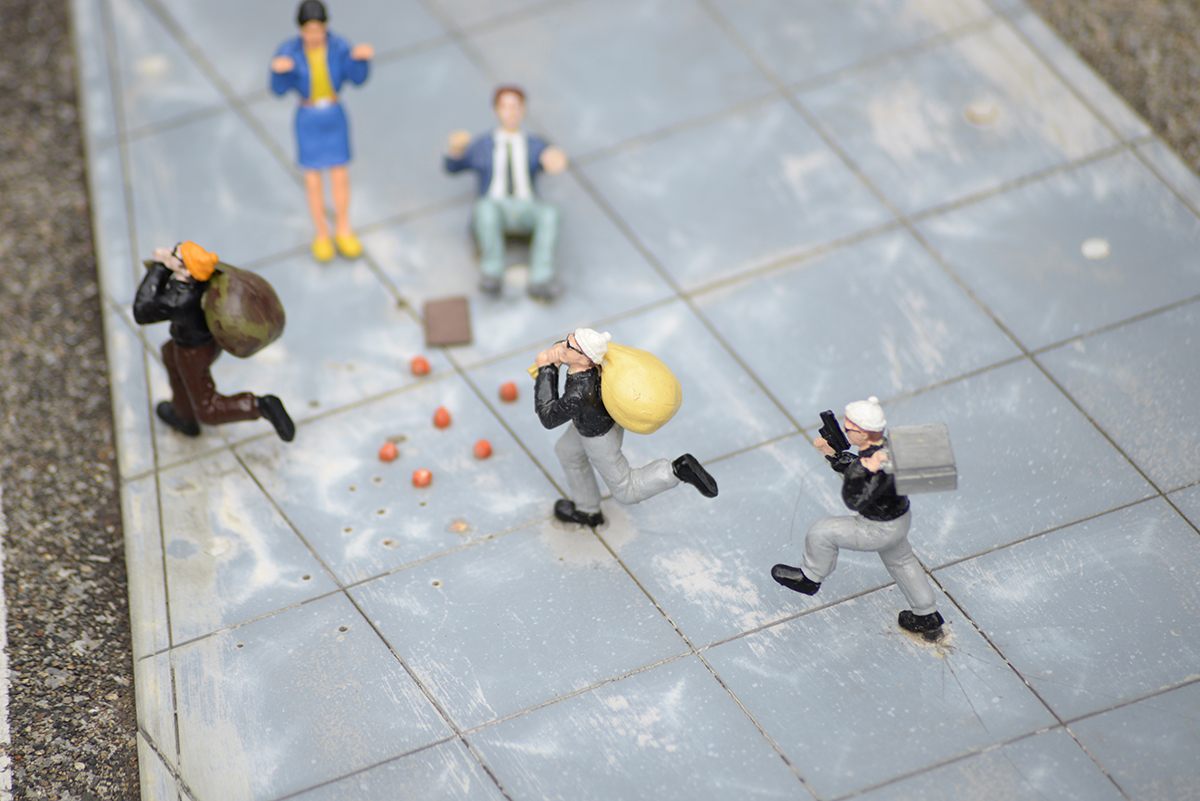
Typical Manhattan robbers, always upsetting piles of oranges.
In Tobu World Square’s America Zone, the twin towers of the World Trade Center still stand. It’s a striking sight, both from a distance as the silvery towers beam 66 feet into the sky, and up close as dozens of happy little figurines go about their daily lives. A cool light-jazz soundtrack plays faintly in the background.

The World Trade Center courtyard.
The remaining sections of the theme park are centered mostly on UNESCO world heritage sites and other important landmarks. At the Egypt Zone, hoards of tourists pile out of busses and crowd around the pyramids and Great Sphinx. The Great Temple of Abu Simbel is wonderfully detailed, right down to each stone carving.

The Great Temple of Abu Simbel.
The Europe Zone, too, presents a plethora of painstakingly reconstructed models, such as St Basil’s Cathedral in Moscow—strangely at ease with its surroundings.

St. Basil’s Cathedral, with the Parthenon and a pyramid of Giza in the background.
An uncanny reproduction of St Peter’s Basilica features hundreds of happy little tourists strolling across St Peter’s Square, some taking snaps with their circa-1990s cameras. (There’s something strangely satisfying about watching real-life tourists take pictures of fake tourists who are also taking pictures.)
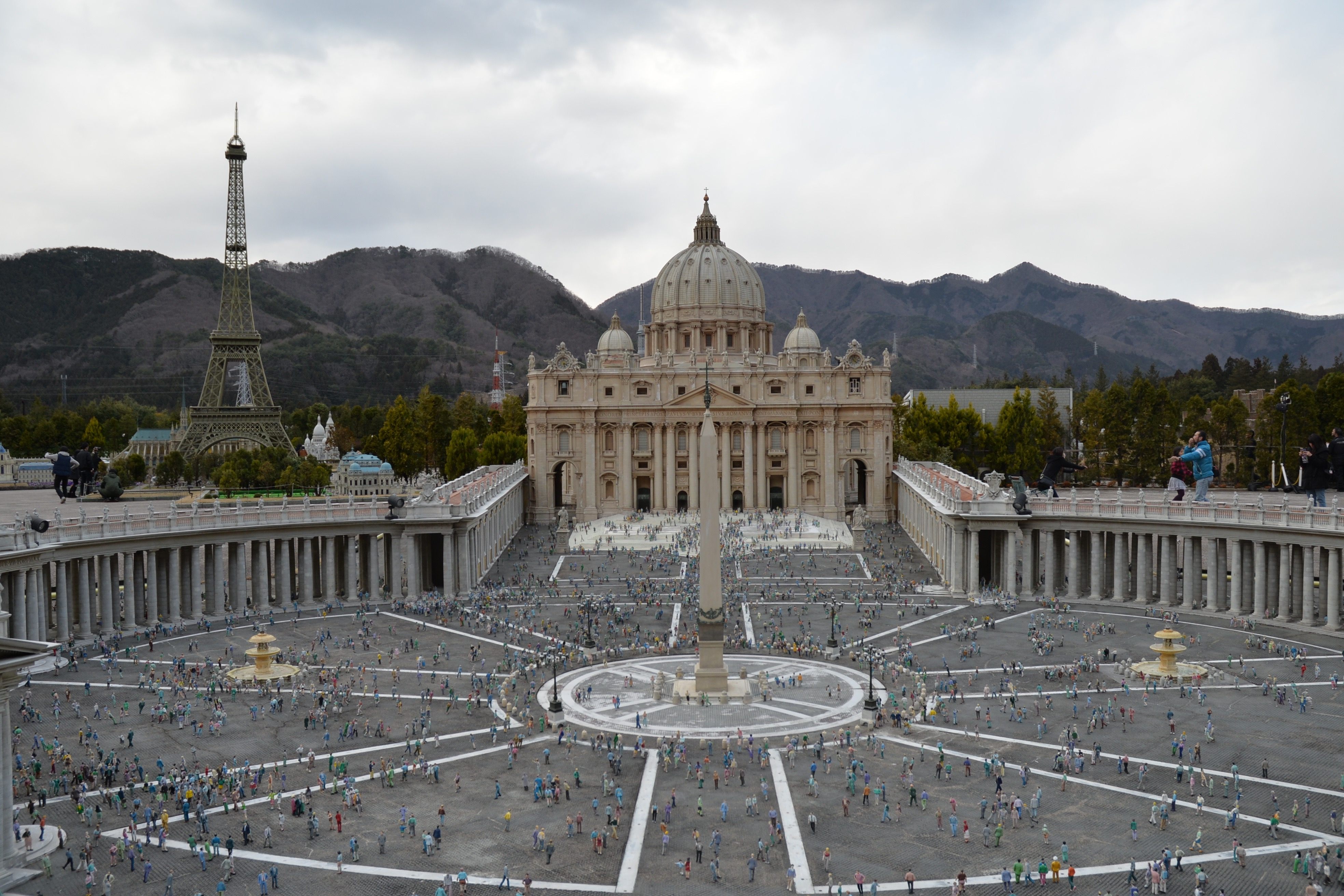
St. Peter’s Basilica and its crowd of camera-toting miniature tourists.
The Sagrada Familia is truly frozen in time, with figurine construction workers still working on the then unbuilt nave.

The Sagrada Familia.
The last two zones, one on Asia and one devoted to historical Japanese landmarks, are a festival of colors and tradition. In the Forbidden City, prostrating figurines play out a scene from Bernardo Bertolucci’s 1987 film The Last Emperor. But the pièce de résistance would have to be the imposing reproduction of the Great Wall of China, which snakes along a well-landscaped hill dotted with hundreds of bonsai trees. The illusion is impressive.

The Great Wall of China.
In Japan, novelty concepts like the Tobu World Square are cherished assets. As the country experiences an unprecedented swell of inbound tourism—estimated to reach 20 million people each year leading up to the 2020 Tokyo Olympics—it would be almost poetic if the theme park itself became an important landmark. The only challenge then would be to recreate a scale replica of the theme park inside the theme park.


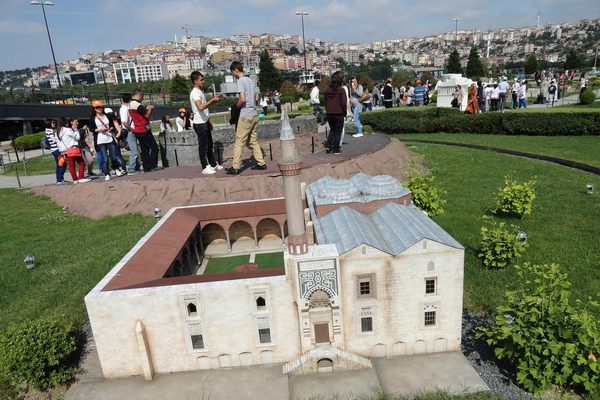
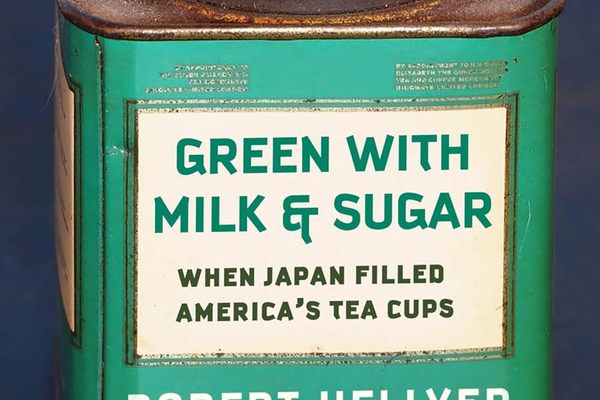
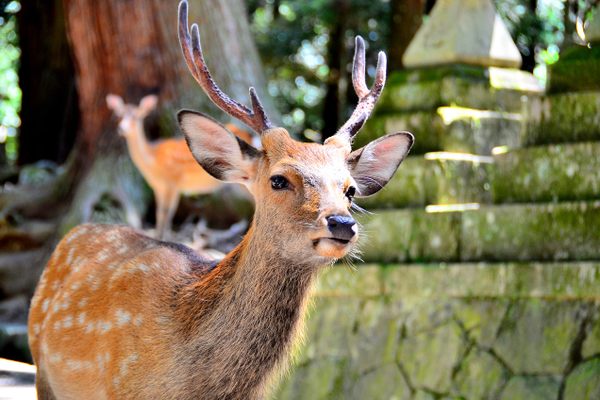








Follow us on Twitter to get the latest on the world's hidden wonders.
Like us on Facebook to get the latest on the world's hidden wonders.
Follow us on Twitter Like us on Facebook